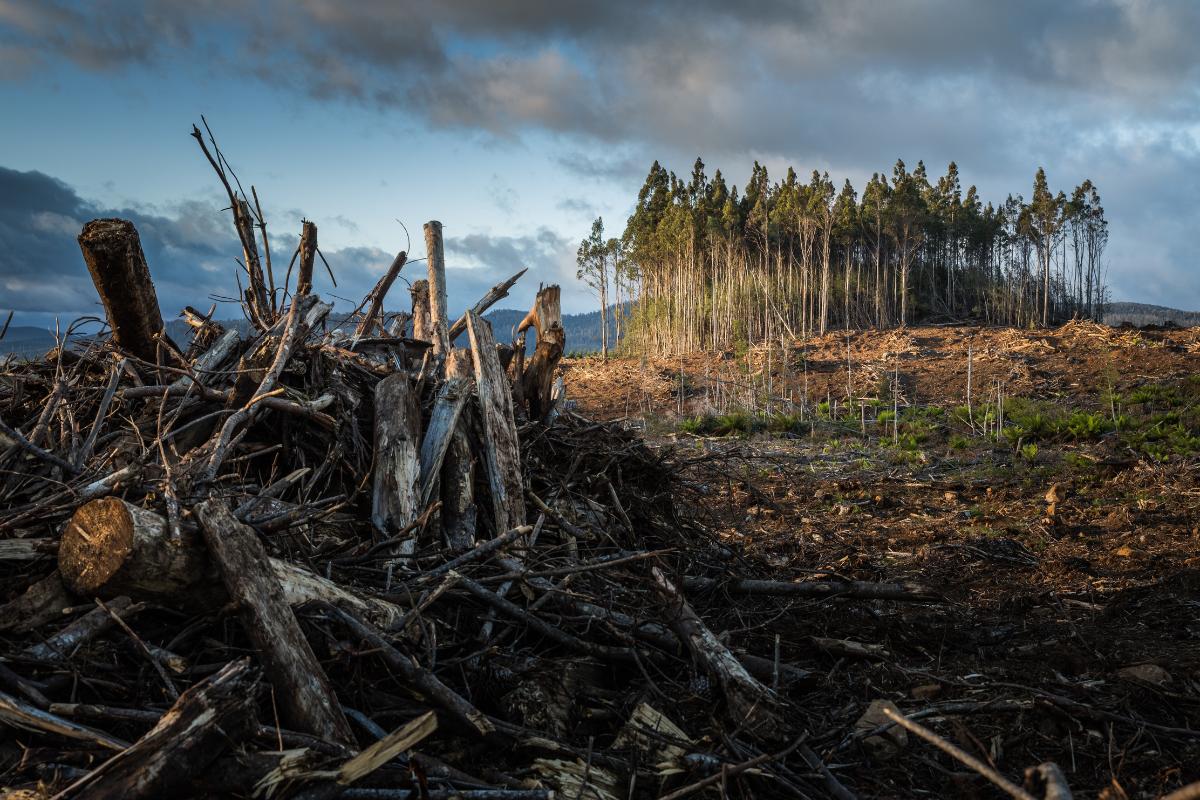By Nicole Rivard
On July 20, members of the Climate Forests Campaign—a coalition of more than 120 organizations, including Friends of Animals—delivered comments to the D.C. offices of the Department of Agriculture calling on the U.S. Forest Service to enact a rule that protects mature and old-growth forests from being chopped down.
In April, the agency issued a rulemaking proposal to improve the climate resilience of federally managed forests. The public comment period on the proposal, now closed, attracted more than half a million comments. You can read FoA’s comments here.
“The future has now become the present, and the climate crisis is more than just a significant challenge to be considered, but rather an unavoidable reality that must be addressed with immediacy,” said Rob Huss, senior staff attorney for FoA’s Wildlife Law Program. “The forests are the lungs of the earth and play a critical and irreplaceable role in ecological health, biodiversity and carbon storage to combat climate change. Rules that authorize logging of forest land will result in the removal of countless mature and old-growth trees, damaging forests and eliminating a critical source of carbon capture and storage, which cannot be replaced without decades and even centuries of growth.”
Logging accelerates climate change
The Biden administration released its “Mature and Old-Growth Forest Report” in April, defining what they are and establishing the first ever inventory of those forests, as required by an executive order the President signed on Earth Day 2022.
The White House had directed the Forest Service and Bureau of Land Management to inventory and conserve old-growth forests on federal land and to implement policies to address threats facing forests. The initial inventory has identified more than 32 million acres of old-growth and around 80 million acres of mature forest across 200 types of forests. The age used to determine what counts as old growth varies by tree species—from 80 years for gambel oaks to 300 years for bristlecone pines.
Despite the directive and perhaps in defiance of it, the Forest Service continues to chop down our most effective natural solution to climate change—in our national forests on public lands. Nearly 370,000 acres of mature and old-growth trees in 22 national forests are currently on the chopping block.
Logging releases three times more carbon per acre into the atmosphere than forest fires. Mature and old-growth trees burn less and withstand fire better than younger trees. Newly planted trees seedlings emit more carbon than they take in for the first 20 to 40 years, before their carbon-removal prowess takes over.

“We don’t have decades to wait for seedlings to grow up to replace the work the mature trees do now that are being logged,” FoA’s Huss added. “Friends of Animals encourages the Forest Service to adopt rules that emphasize protecting and preserving these forests through methods that do not include logging, prescribed burns or other methods of management in which healthy forests are thinned or decreased in density for the purported health of the forest and ecosystem,” Huss added.
Essential wildlife habitat
FoA’s comments point out that logging wreaks havoc with animals’ ability to survive because it disrupts their movement, creates sound pollution that can cause stress and limit communication between individuals, removes cover and introduces humans to the secluded areas the animals enjoy and need. An example is the woodland caribou, found in the North American west in the U.S. and Canada. Due to increased logging, the last known member of the species to habitually cross into the U.S. from Canada was removed by scientists for conservation purposes in 2019.
Pinyon and juniper woodlands are the most abundant forest type in the federally managed inventory of mature and old-growth forests, with nine million acres of old-growth pinyon-juniper across BLM and Forest Service lands and an additional 14 million acres of mature pinyon-juniper. The BLM and U.S. Forest Service define old-growth pinyon and juniper woodlands to be 150-250 years old, depending on site productivity, the geographic location and other factors. Some juniper trees can exceed ages of 1,500 years, and pinyon trees more than 900 years.
These ecosystems provide habitat for ferruginous hawk, juniper titmouse, mountain bluebird, American kestrel, blackthroated gray warbler, dusky flycatcher, fringed myotis, pallid bat, white-tailed antelope squirrels, Apache pocket mice, desert woodrats, kit foxes, ringtails, white-backed hog-nosed skunks, northern sagebrush lizard and dozens more. Additionally, pinyon and juniper woodlands are important habitat for mule deer, elk, pronghorn and white-tailed deer.
Low elevation forests such as pinyon and juniper woodlands provide critical habitat connectivity that supports seasonal migration patterns of big game species. Pinyon jays live in pinyon trees year-round and can facilitate dispersal of seeds for pinyon pine regeneration. Long-term drought, climate change and habitat loss pose a significant threat to Pinyon jay populations.
“You couldn’t not think about the climate crisis in early June as a haze and odor of burning wood from wildfires in Canada blanketed Connecticut. Getting air quality alerts and hearing that smoke from the fires was elevating fine particle pollution that could impact our lungs and heart, cause breathing problems and aggravate asthma, was alarming,” said Priscilla Feral, president of Friends of Animals.
“Not to mention you can’t pick up a newspaper without seeing headlines about unprecedented heat waves, extreme flooding and other results of a planet on the brink. Two months of rain recently fell in only two days in Vermont. The Forest Service needs to wake up. Its role is pivotal in determining the impact of climate change on our fate, the planet’s and all the creatures who we share it with.”

